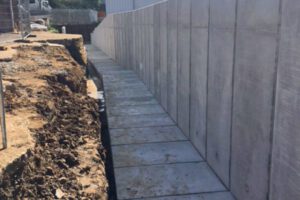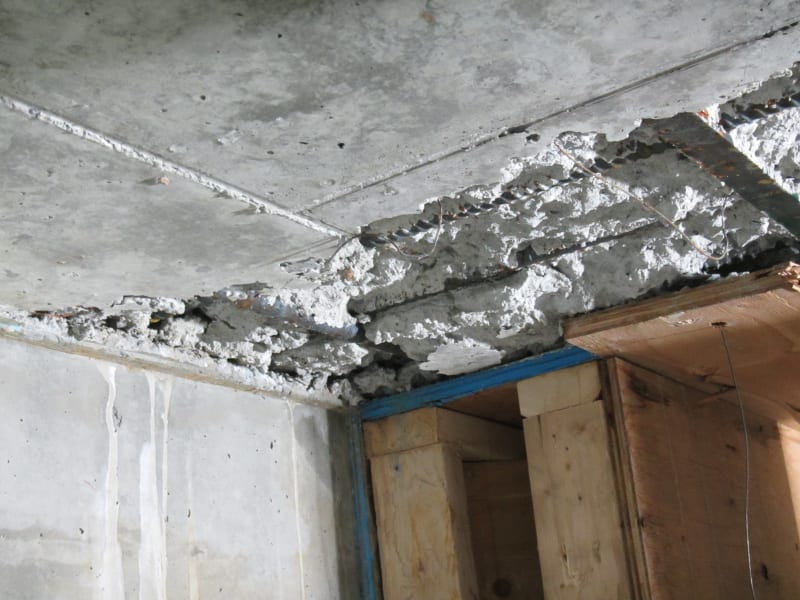Concrete retaining walls are durable and versatile whether you want to prevent soil erosion or redefine garden boundaries. Concrete Contractors Colorado Springs also adds beauty and functionality to sloping landscapes.
Retaining wall design is a complex process that requires expert skill. This is especially true for taller retaining walls. When constructing a concrete block retaining wall, it is important to follow proper procedures.

Concrete is known for its durability, which makes it a great choice for retaining walls. These structures are often built in areas that experience changes in soil and ground movement, so they need to be strong enough to withstand this pressure. They must also be aesthetically pleasing, which is difficult to do with many other materials.
The first way to keep your retaining wall in good condition is to ensure that it is properly designed for the location and soil conditions. A professional engineer should be hired to evaluate the site and create a design that can withstand the loads. They will also make sure that the drainage is adequate so that water does not pool behind the wall, which could cause structural failure.
Another important step is to maintain the wall regularly. This includes cleaning it and removing debris that can build up over time. A retaining wall that is not maintained will be damaged more quickly, which can cost a lot of money in repair and replacement costs.
A retaining wall can have a big impact on your landscape and can transform it into a more usable space. It can add a visual focal point, define garden boundaries, and prevent soil erosion. In addition, it can also improve the functionality of a sloping garden by creating different terraces.
Retaining walls can be made of a variety of materials, including wood, stone and bricks. However, concrete is the most common material. It is less expensive than other options and can be used in a variety of styles. It can be colored and textured to match the surrounding landscape. It is also a durable material that can last for decades.
However, concrete may not be the best option for those looking for a natural look. It is also a resource-intensive material and produces CO2. Some people prefer to use natural stones instead of concrete for their retaining walls, as they can last longer than a concrete structure. In addition, they are cheaper than a concrete structure and have a more organic appearance.
Whether you want to add curb appeal to your home or need a sturdy, long-lasting retaining wall for your backyard project, there are many choices available. These walls are typically made from concrete or other materials that withstand harsh weather conditions and resist corrosion. They can also be built to meet your specific needs, including cost and design. Before you choose a retaining wall, consider the type of soil and the intended use of your yard. Then, decide on the best material for your project.
A retaining wall can help level or sculpt your landscaping, making it more attractive and functional. It can also protect a slope from erosion and mudslides. However, it is important to understand the limitations of this kind of structure. It is best to consult a professional to ensure that your retaining wall is safe and secure.
When choosing a retaining wall, it is important to take into account the geometry of the site and location. The Geotechnical Manual offers information on the evaluation of geometry and selection of various wall types. Typically, the most suitable wall type is one that can be constructed in the cut or fill condition, which requires the removal of the lower portion of the slope and placement of the upper portion of the slope as fill.
The stability of a retaining wall is determined by the ultimate bearing capacity of the foundation soil at the toe of the wall and the resisting forces exerted on the facing at the wall head. A general rule of thumb is that the resultant forces must be within B/3 (second of three equally divided widths) for the wall to be stable.
Another factor in stability is the permeability of the soil. Adding drainage systems reduces surcharges and improves soil shear strength. The soil behind a retaining wall should be regularly monitored for signs of movement. If the soil begins to shift, you should seek professional advice.
Another method of retaining soil is to build a reinforced concrete box wall. This type of retaining wall is usually used to retain soils that are too weak for conventional retaining walls. The construction of this type of retaining wall is very similar to the construction of a regular concrete block wall. The difference is that it incorporates a steel reinforcement to increase its strength.
Besides their functional benefits, such as erosion control, retaining walls can also enhance the aesthetics of your garden. They add structure, create visual contrast, and unlock your garden’s full potential by transforming it into a visually appealing oasis. They can be designed to match any landscape style, from modern minimalism to rustic charm. They can even be used to define terraces on sloping landscapes or redefine garden boundaries.
Concrete retaining walls are available in various finishes and designs, making them versatile enough to fit any landscaping design. They can be made to look like stone masonry, or they can be colored and stained with eco-friendly materials that will not discolor over time. They are much stronger than alternatives such as rock or soil, and they can be shaped to achieve the desired architectural appearance. They can also be used to improve garden functionality by creating flat surfaces that are easier to maintain.
In addition to their structural functions, retaining walls can enhance your property’s curb appeal and increase its value. A well-designed retaining wall will enhance the overall appearance of your home and make it more attractive to prospective buyers. In this way, a concrete retaining wall is an excellent investment in your home’s landscaping.
Retaining walls can be designed in a variety of styles, from traditional to contemporary, and they are often incorporated into other landscape features such as driveways, patios and walkways. They can also be built to mimic natural rock formations or a combination of materials such as stone and wood. Some retaining walls are made from poured concrete, while others are built with block systems that offer more flexibility and creativity.
Aesthetics are a key consideration for many homeowners when choosing the type of retaining wall to build. In addition to their structural advantages, concrete retaining walls are also extremely attractive and provide a variety of decorative options. For example, they can be stained with earth tones and colors to match the surrounding vegetation. Retaining walls can also be molded into different shapes, such as curved walls that add a soft touch to the landscape or straight walls that lend a sense of structural integrity.
Retaining walls are a necessity in some yards, as they help prevent erosion and add flat land where plants can grow. They also provide a decorative touch to a yard. However, retaining wall costs can vary depending on the material and installation type chosen. Concrete is the most common retaining wall material, but it can also be made out of brick, stone or other materials. Regardless of the material, a well-constructed retaining wall can last a lifetime.
The cost of a concrete retaining wall will depend on the size and complexity of the project. For example, a wall that is 6 feet tall will require more excavation and backfill than a 3 foot wall. The cost of excavation will also increase if the site is difficult to access or requires special equipment. A retaining wall that requires reinforcement will also be more expensive than one without.
Another factor that influences the cost of a retaining wall is the soil. Some types of soil are not sturdy enough to support a retaining wall, while others may be prone to flooding or erosion. If your soil is muddy, sandy or rocky, the cost of excavation and backfill will be higher than for well-drained soil.
A retaining wall constructed of a more durable material, such as poured concrete, is more expensive than a block or mortared retaining wall. A poured concrete wall can be stained or colored to look like stone, brick or other textures. This makes it a good option for homeowners who want to avoid the maintenance of other types of retaining walls.
Other types of retaining walls, such as cinder blocks or precast panels, are less expensive than a poured concrete wall but can be just as attractive. Cinder block walls typically run between $10 and $12 per square foot installed. They are not structurally designed for lateral support or to hold back the land, but they work well for short retaining walls.
A retaining wall that is topped with gravel or sand will need drainage to prevent moisture problems. If you don’t have a drainage system in place, your contractor will need to install one. This is an additional expense that will run from $500 to $18,000.







